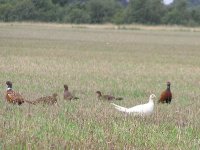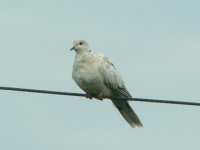JonH
Active member
I saw this whiite bird always at a distance several months ago. This was over a period of weeks and eventualy was fortunate to get close enough to get a picture and confirm that it was a pheasant. I'm sure it was a natural wild bird and not one that was released. Unfortunately the sighting and photo were also one of the last. ( hopefully the pic. will be attached )







